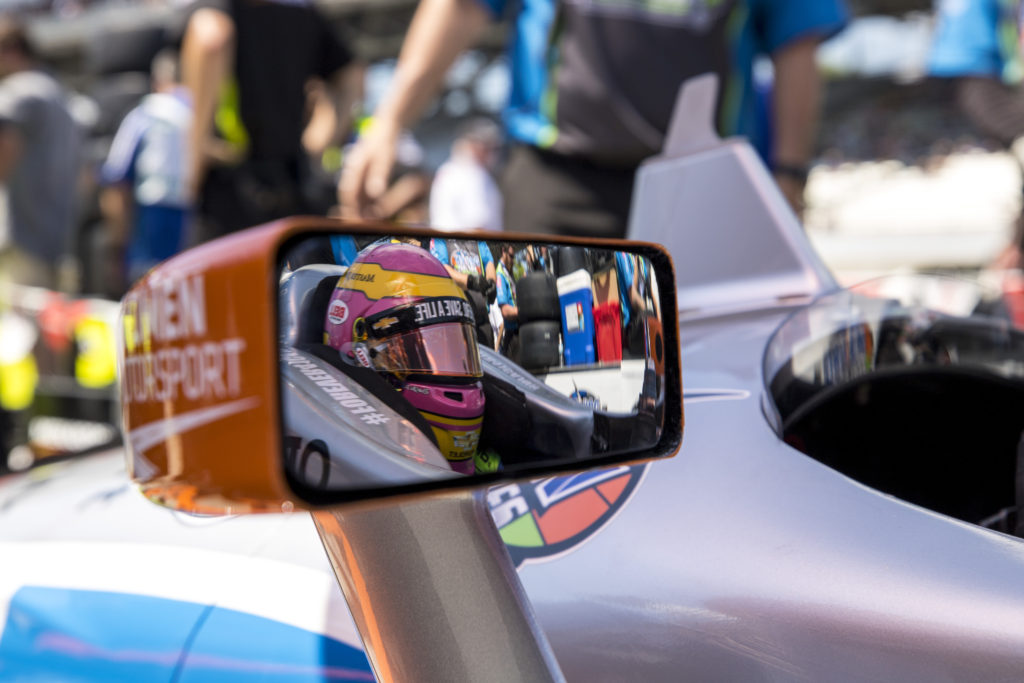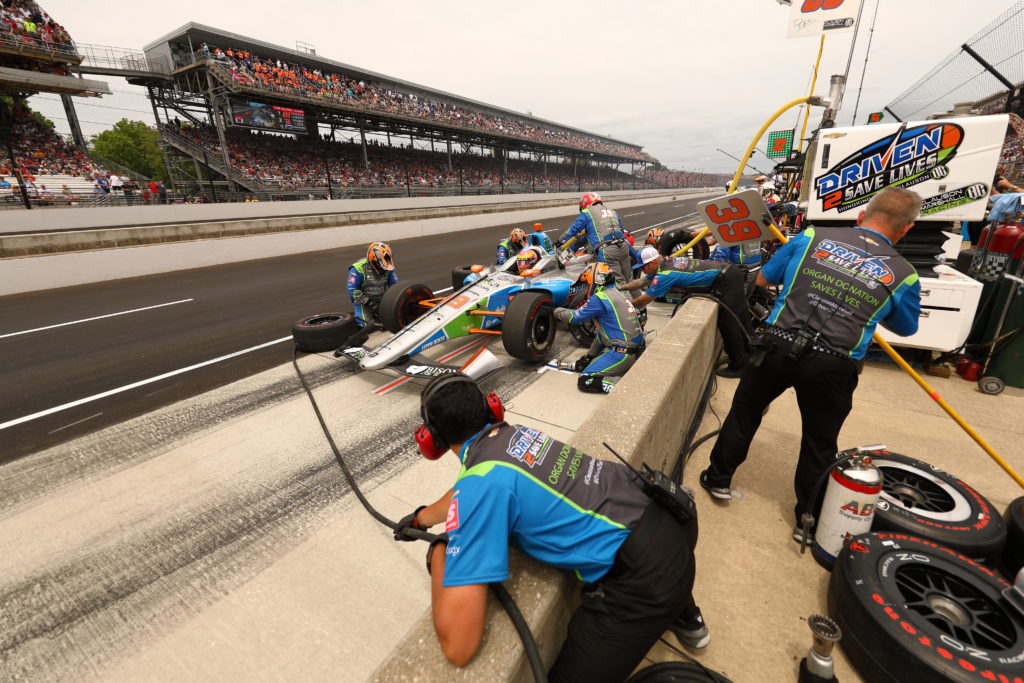
One of the questions I am asked most often is what it’s really like to run at sustained speeds of 230 mph.
The short answer to this question is probably the most obvious one, which is when the car is set up very good, there’s nothing else like it. Those are the days that as racers, we live for.
However, when the car set up is very bad, there’s also nothing else like it, but this sentence has a whole different connotation and meaning…
Let’s start with the obvious: 230 mph is fast. When you’re traveling at this speed, you’re covering the length of an American football field in less than a second – every second. The human brain initially evolved for processing a flat out sprint away from danger or towards prey at around a maximum of 20 mph. So this extra 210 mph we’re throwing around is kind of a big deal.

Now luckily, just like in other sports, racers are not merely thrown into the highest level and expected to survive. Instead, we grow up racing, and as we get older, uglier, and hopefully better, the cars get faster. You’re effectively training your brain one step at a time to cope with these ever-increasing speeds. One of the key ways that you do that is by learning how to adjust your vision.
Back to the whole, “how humans were initially designed” concept. Did you know that when threatened, and humans’ natural fight-or-flight instinct kicks in, that your vision narrows? It’s true. For a flat out sprint at 20 mph, this is pretty much perfect. However, as I’m sure you can imagine if your vision narrowed so that you were only able to see right in front of your car at 230 mph, this would be a much bigger problem.
As racers, one of the biggest things we learn as early as possible in our careers is to pick our eyes up and look ahead. As the speed of the cars increase, you have to look further and further up the road ahead of you. Once you master the ability to do this, your brain starts to slow things down. Things are now happening at a reasonable rate of speed, and you have time to process information, and hopefully make smarter future decisions.

Now, that being said there’s a joke within the racing community that the most famous words after “Gentleman start your engines” (ahem….) is “I thought I had that.” These are the infamous words that many-a-racer has muttered after bewilderedly stepping from what was once a race car, and is now a steaming pile of scrap. Because here’s the catch to your brain slowing things down for you in real life: it’s still happening at 230 mph, and when it goes wrong at those speeds happens in a hurry. You felt like you did everything right, reacted within plenty of time, and can’t understand why the car got away from you, but then you watch the video replays, and you see that in reality, this all happened in a fraction of a second, and that was it. Bam!
Talking of “bam,” here’s the other thing about 230 mph: I do those speeds in an IndyCar at Indianapolis Motor Speedway. That means I, and the other IndyCar drivers, are doing those speeds between two concrete walls – one on either side.
Formula 1 cars are undoubtedly the fastest cars on the planet on a street or road course. But, I remember the shock and awe in the commentator’s voices, when those cars first went to Mexico, and they hit numbers in the high 220 mph range at the end of the straight.
At the end of the straight, with a run-off area, not average speed, and not between two concrete walls.
Needless to say, when you get it wrong at 230 mph, however safe the car is, and even on the days when you are able to climb from the cockpit under your own power – it still hurts. Now I’m not just talking about your ego, pride, and confidence – all of which are admittedly hurting nicely too. I’m simply pointing out that I have never been in an oval shunt that didn’t really, and genuinely, hurt. Full stop.

There are two kinds of drivers at the Indianapolis 500: Those who have hit the wall, and those who are going to. When there are no large swathes of tarmac run-off, your mistakes in the race car will be punished, and you will likely hit the wall. This is part of life for those of us who choose to run 230 mph, and this is the reason that some decide not to come and compete.
The final thing to understand about life at 230 mph is that when we run these speeds, we’re in qualifying trim. In race trim, an IndyCar does around 220mph or 225 average, but this depends on the traffic around you, and the “tow” that sucks you up to the car in front of you. Everything I’ve already said about life at 230 mph applies at 220 mph too, but you still have race levels of downforce, helping push the car into the race track.
To run at 230 mph average, without the tow from another car helping you gain speed, means you have to start trimming that downforce. All of it. You’re aiming to go as fast as possible in a straight line, and your job as the driver is to try and hang on for the four laps of qualifying while staying as close as possible to flat out ensuring you lose minimal time. 230 mph always feels significantly faster than 220 mph simply because to get there you’re now navigating a high-speed tight-rope. You’re as close to the edge as you feel like you can possibly get without tipping things over and getting it wrong, your heart rate is through the roof, you’re trying to remember to breathe, to adjust your tools, to get it just right…

Ultimately, if you get it wrong, you’re probably going to hit the wall at an even faster speed than you would in race trim. And if you hit the wall, you’re probably going home as one of the teams that did not qualify. Then you’ll have to wait another full year to try and make the show again.
No pressure.
About the Author: Pippa Mann is a professional Performance Driving coach, and an occasional racing driver in just about anything someone will put her name on. Most recently she competed in her 7th Indianapolis 500 and finished in 16th place.




